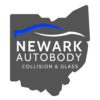Emerging Collision Repair Technology
The collision repair industry has been evolving rapidly in recent years, driven by emerging collision repair technology and changing consumer preferences. Collision repair shops are no longer just places to fix dents and scratches; they now offer a wide range of services, from paintless dent repair to full vehicle restorations.
One of the biggest trends in the collision repair industry is the use of advanced materials and technologies to improve efficiency and quality of repairs. For example, many shops are now using computerized measuring systems to ensure that vehicles are repaired to factory specifications. This not only improves the quality of repairs but also reduces the time it takes to complete them.
Another emerging trend in the collision repair industry is the use of artificial intelligence and machine learning algorithms to streamline the repair process. These technologies can help technicians identify damage more accurately and quickly,
Advanced Driver Assistance Systems (ADAS)
As autobody technology continues to advance at a rapid pace, the collision repair industry is also evolving to keep up with emerging technologies and trends. One of the most significant advancements in recent years is the development of Advanced Driver Assistance Systems (ADAS). These systems are designed to help drivers avoid collisions by providing real-time information about their surroundings and assisting them in making safer driving decisions.
ADAS includes a wide range of features, such as lane departure warning, adaptive cruise control, automatic emergency braking, and more. These systems rely on sensors, cameras, and radar to monitor the vehicle’s surroundings and provide alerts or assistance when necessary.
One of the key challenges with ADAS systems is ensuring that they are properly calibrated after a collision. If these systems are not calibrated correctly, they may not function as intended, putting drivers at risk. This has led to the development of new technologies and tools specifically designed for calibrating ADAS systems, such as calibration targets and software programs.
Looking towards the future of collision repair, it is clear that the collision repair industry will continue to be shaped by emerging technologies and trends. As vehicles become more advanced and complex, collision repair shops will need to stay ahead of the curve by investing in training and equipment to effectively repair these vehicles.
CCC predicts that as more vehicles are equipped with ADAS, the frequency of accidents will decline, so much so that the company projects a 20-percent decrease by 2030.
Source: vehicleservicepros.com
Electric Vehicles
Electric vehicles (EVs) are becoming increasingly popular as the automotive industry shifts towards more sustainable and environmentally friendly options. However, the rise of EVs also poses challenges for collision repair shops due to their unique design and technology.
One of the main differences between traditional internal combustion engine vehicles and EVs is their powertrain. Electric vehicles have high-voltage systems that require specialized training and equipment to safely work on. Collision repair shops will need to invest in training and tools to ensure that technicians are equipped to handle repairs on EVs.
Another challenge with EVs is their lightweight construction, which can make them more susceptible to damage in a collision. Repairing these vehicles may require specialized techniques and materials to maintain their structural integrity.
Despite these challenges, the rise of EVs also presents opportunities for collision repair shops . As more EVs hit the road, there will be an increasing demand for repair and maintenance services specific to these vehicles. Shops that specialize in EV repairs may find themselves with a competitive edge in the market.
Autonomous Vehicles
Autonomous vehicles are one of the most significant emerging technologies in the collision repair industry. As more and more self-driving cars hit the roads, collision repair shops will need to adapt to accommodate these new types of vehicles.
One of the key challenges with autonomous vehicles is that they operate differently than traditional cars. For example, many autonomous vehicles are equipped with sensors and cameras that help them “see” their surroundings and make decisions based on that information. Repairing these sensors and cameras will require specialized training and equipment, as well as a thorough understanding of how autonomous systems work.
Additionally, the complexity of autonomous vehicles may require collision repair shops to invest in new technology and tools to effectively diagnose and repair them. Shops that are able to stay ahead of the curve and offer services specific to autonomous vehicles may find themselves in high demand as more self-driving cars become mainstream.
Conclusion
The future of collision repair is being shaped by emerging technologies such as ADAS, electric vehicles, and autonomous vehicles. Collision repair shops will need to adapt to these changes by investing in training, equipment, and technology to effectively repair modern vehicles. By staying ahead of the curve and embracing these new trends, collision repair shops can position themselves for success in the evolving automotive industry.
Further Reading: 9 Ways to Save Money on Autobody Repair
Ohio Drivers: Contact Newark Autobody for Your Auto Body Repair Needs
Newark Autobody Collision and Glass
977 Mount Vernon Road
Newark, Ohio 43055
Phone: (740) 899-4111
Fax: (740) 888-3500

